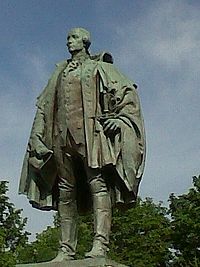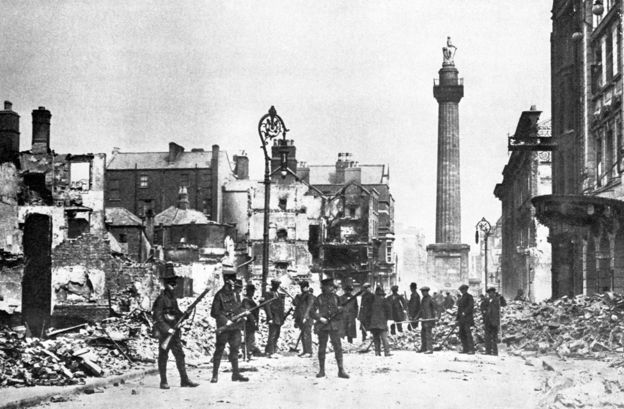Statue of ruthless English coloniser removed in Canada
There are monuments, statues and place names throughout the Celtic lands honouring foreign rulers and colonisers. Many of them paying homage to those who are despised by the indigenous peoples whose lands they helped colonise or those used as symbols of the colonising force. Some have been removed officially and some unofficially. One such case that comes to mind was the statue of Horatio Nelson, built in the centre of what was then Sackville Street (later renamed O'Connell Street) in Dublin, Ireland. Erected in 1809 when Ireland was part of the United Kingdom, it survived until March 1966. It was frequently pointed out that a statue to the British admiral had no place in Dublin after Irish independence was achieved. After years of inconclusive discussion on the subject the issue was dealt with when people took the matter into their own hands and blew up the statue. Its remnants were later destroyed by the Irish Army.
There continues to be a legacy of place names and monuments to foreign oppressors. Recently campaigns have been underway in Ireland to remove the name of Queen Victoria the 'Famine Queen' from Irish street signs. The same applies in other Celtic nations, such as the 100-foot-tall statue which is perched on top of Ben Bhraggie (Scottish Gaelic: Beinn a' Bhragaidh) in Scotland above the village of Golspie. It is a sculpture of George Leveson-Gower, Marquess of Stafford and first Duke of Sutherland who became notorious for the part he played in the Highland clearances. Elizabeth Gordon, Countess of Sutherland, and her English husband George Granville Leveson-Gower, the Marquis of Stafford, were responsible for the eviction of around 15,000 people from their lands. Those cleared from the land had to do what they could to survive and feed their families. Some moved to coastal settlements with poorer lands, or to the towns and cities of the south, many emigrated. There have long been calls for the removal of the statue from Ben Bhraggie.
Recently the statue of British military leader Lieutenant General Edward Cornwallis has been removed from his pedestal in Canada. He was the military officer who founded Halifax, Nova Scotia in 1749. This was the same aristocratic Cornwallis who played a key role in the Duke of Cumberland’s forces during the 1745 Jacobite Rising in Scotland. Following the orders to “plunder, burn and destroy through all the west part of Invernesshire called Lochaber”, he led 320 men in a campaign to stamp out Highland resistance. Now the removal of his statue from its plinth in Halifax, Nova Scotia, Canada is a victory for indigenous activists and their supporters. Cornwallis was the man who placed a bounty on the lives of Mi’kmaq men, women and children in the so-called scalping proclamation aimed at solidifying colonial power. The Mi'kmaq are people indigenous to Canada's Atlantic Provinces.
There is an argument that removing such statues and place names seeks to deny history. This is a fair point and it would be bad to do this. However, leaving such symbols in a way that clearly pays homage is also harmful. Hence the decision to rename those places bearing the name Adolph Hitler after the Second World War. A more appropriate way to deal with the issue of removed statues would be to put them in a museum. Giving information which places them in their historical context. As for the Mi’kmaq people of Halifax, they no longer have to walk daily past a statue of a ruthless coloniser, which paid homage to man who sought the eradication of their culture, language and very existence.








